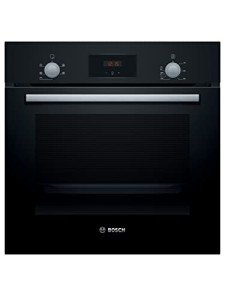20 Myths About Integrated Ovens And Hobs: Dispelled

The Future of Culinary Convenience: Integrated Ovens and Hobs
In the ever-evolving world of kitchen design, integrated ovens and hobs are at the forefront of contemporary cooking development. These devices not just promise aesthetic appeal but likewise enhance functionality and performance, changing how we prepare our meals. As property owners progressively seek to produce smooth, elegant, and user-friendly cooking areas, the integration of ovens and hobs provides a perfect service. This post explores what integrated ovens and hobs are, their advantages, and essential factors to consider for those seeking to upgrade their kitchen area.
What Are Integrated Ovens and Hobs?
Integrated ovens and hobs are kitchen area home appliances perfectly built into the kitchen cabinetry or counters, instead of standing out as separate entities. Integrated ovens are developed to mix into kitchen systems, offering a flush surface with surrounding kitchen cabinetry. Likewise, integrated hobs are installed straight into the countertop, creating a streamlined appearance. This minimalist design approach not just elevates the aesthetic appeal of the cooking area however also takes full advantage of available space.
Types of Integrated Ovens
Single Ovens: These standalone systems are created for simpleness and ease of usage, featuring a single cooking chamber and numerous cooking modes such as baking, grilling, and roasting.
Double Ovens: Ideal for larger families or avid cooks, double ovens offer 2 independent cooking compartments, permitting multiple meals to be prepared all at once at various temperatures.
Combination Ovens: Blending traditional baking and steam cooking, mix ovens use flexibility for different cooking requirements, retaining moisture while guaranteeing completely cooked meals.
Types of Integrated Hobs
Gas Hobs: These hobs permit for precise temperature level control and immediate heat, making them a favorite amongst expert chefs and cooking enthusiasts.
Induction Hobs: Known for their performance and safety, induction hobs utilize electro-magnetic energy to heat pots and pans directly. They are fast to heat and cool off rapidly, lowering the threat of burns.
Electric Hobs: Featuring smooth ceramic or glass surface areas, electric hobs are simple to clean and provide an even heat circulation for a range of cooking designs.
Benefits of Integrated Ovens and Hobs
1. Area Optimization
With the trend of smaller sized home and open-concept homes, integrated devices help maximize kitchen area. By fitting effortlessly into cabinets, kitchen areas can appear bigger and more open, lessening clutter and enhancing visual appeal.

2. Visual Appeal
Integrated ovens and hobs provide a streamlined, modern look that fits well within different design themes. The ability to customize cabinetry makes sure that homeowners can attain a cohesive appearance that matches their design, whether contemporary, conventional, or something in between.
3. Enhanced Functionality
Integrated devices often feature sophisticated features such as smart innovation, self-cleaning options, and numerous cooking modes. These improvements not only improve the cooking procedure but also boost use, making preparing a pleasurable experience.
4. Safety Features
Integrated hobs, particularly induction designs, are considered safer than conventional cooking surface areas. They cool off rapidly, minimizing the threat of burns, and often consist of functions like kid locks and automated shut-off for additional safety.
Key Considerations When Choosing Integrated Ovens and Hobs
1. Area and Layout
Before purchasing integrated appliances, think about the area available in your kitchen area. Procedure the cabinetry and countertops thoroughly to guarantee a perfect fit, permitting for adequate ventilation and installation area.
2. Cooking Needs
Examine your cooking routines and choices. If you frequently entertain or prepare big meals, a double oven might be the very best choice. Alternatively, if ovens built in 're a periodic chef, a single oven might be enough. Similarly, selecting between gas, electric, or induction hobs will depend on your cooking design and comfort level.
3. Energy Efficiency
With rising energy costs and growing ecological concerns, choosing energy-efficient devices can save cash in the long run. Try to find items with high energy rankings and features like programmable timers and eco-modes.
4. Quality and Brand
Buying top quality devices from credible brand names guarantees durability and performance. Checking out client evaluations and looking for recommendations can assist limit the very best alternatives customized to your requirements.
Conclusion
Integrated ovens and hobs are more than just kitchen home appliances; they represent a shift towards a more functional, trendy, and effective approach to cooking. As property owners prioritize seamless design, convenience, and advanced features, these integrated services will certainly shape the kitchens of tomorrow. Whether remodeling a cooking area or developing a new one from scratch, integrating ovens and hobs is an investment that promises to enhance both culinary experiences and the general visual of the home.
